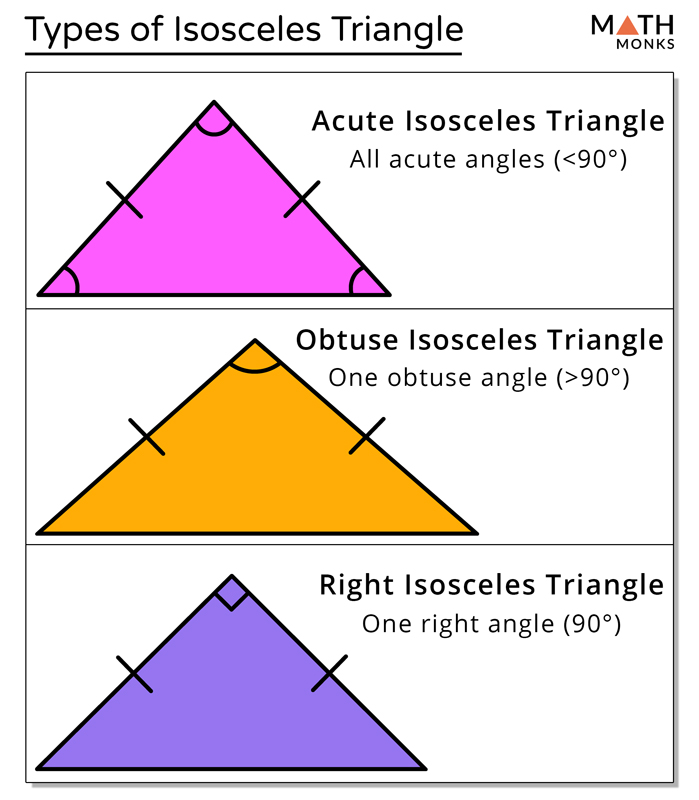
So, the answer to all three parts of the question is \textbf. So, it is possible to have an equiangular isosceles triangle. However, an equilateral triangle is also an isosceles triangle because it has at least two sides of equal length.

This is also known as an equilateral triangle. Step 3:} An equiangular isosceles triangle is a triangle where all angles are equal. So, it is also possible to have an obtuse isosceles triangle.

The sides opposite these equal angles are also of equal length. Step 2:} An obtuse isosceles triangle is a triangle where one angle is greater than 90 degrees and the other two angles are of equal measure. So, it is possible to have an acute isosceles triangle. Step 1:} An acute isosceles triangle is a triangle where all the angles are less than 90 degrees and two sides are of equal length. So, the answer to all three parts of the question is yes, it is possible. So, it is also possible to have an obtuse isosceles triangle.Īn equiangular isosceles triangle is a triangle where all angles are equal. So, it is possible to have an acute isosceles triangle.Īn obtuse isosceles triangle is a triangle where one angle is greater than 90 degrees and the other two angles are of equal measure. We require two equal angles for any isosceles triangle. Any two angles of a triangle must have a sum of less than 180 180 degrees.

Because the sum of the interior angles of a triangle must be 180 180. It is the 2 sides which are opposite the 2 equal base angles which are equal in length.An acute isosceles triangle is a triangle where all the angles are less than 90 degrees and two sides are of equal length. All isosceles triangles have two acute angles. Make sure that you get the equal sides and angles in the correct position. The common mistake is identifying the wrong sides as the equal (congruent sides). Answer: No, the given figure is not an obtuse triangle as all the angles are. Seeing the triangles in different positions will help with this understanding.įor example, here is a picture where the base angles of an isosceles triangle are on the top. Acute / Obtuse Isosceles Triangles - ACT Math Sign In Tutor Bios Test Prep. The common mistake is thinking that the base of the angles are always on the bottom of the isosceles triangle. So when students classify the triangles, they wind up classifying them incorrectly. However, equilateral triangles have three equal (congruent) sides and angles and can be classified as isosceles.Ī common mistake when classifying triangles is mixing up the definitions of acute angle and obtuse angle. Isosceles triangles only have two equal (congruent) sides and angles and cannot be classified as equilateral. Understanding that properties of isosceles triangles and equilateral triangles can help with questions like this.

The easy mistake to make is stating that isosceles triangles can be classified as equilateral triangles. Thinking that isosceles triangles can be classified as equilateral trianglesĪ question may ask students to explain if an isosceles triangle can be equilateral.


 0 kommentar(er)
0 kommentar(er)
